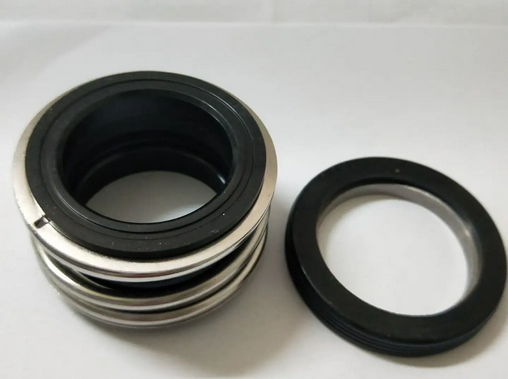"Quick Cooling" Treatment of Centrifugal Pump Sealing End Surface
The "quenching" treatment of the seal end face of a centrifugal pump is an important cooling and lubrication method, which aims to reduce the temperature of the seal end face, prevent damage caused by overheating, and improve the sealing performance. The following is a detailed explanation of the "quenching" treatment of the seal end face of a centrifugal pump:
1. The concept and purpose of quenching
"Quick cooling" usually refers to the introduction of a flushing medium (such as water, nitrogen or steam) at the atmospheric side seal face of the mechanical seal to prevent possible interference with the seal movement and disassembly, prevent the seal end face from overheating, and cause harm to the on-site operators and the environment. The main purpose of the quenching treatment is to reduce the temperature of the seal end face and maintain its stability and reliability.

2. Implementation of quenching treatment
Flushing scheme:
Injection flushing: For the single-end seal of a centrifugal pump, injection flushing can be selected, and the flushing liquid is often wax oil or other clean liquid with a suitable temperature. The flushing liquid is introduced from the outside and flushed near the seal end face through the process fluid side of the seal chamber to achieve the effect of cooling and lubrication.
Circulation flushing: For the double-end mechanical seal of a centrifugal pump, a circulation flushing method is often used with external cooling. The flushing liquid circulates in the sealing cavity, lowers the temperature through the external cooling system, and then returns to the sealing cavity for flushing.
Selection of quenching medium:
Water: It is one of the most commonly used quenching media and is suitable for most occasions. Water has good cooling effect and fluidity, and can effectively reduce the temperature of the sealing end face.
Nitrogen: In certain occasions, such as the application of oxidizable or coking media, nitrogen is more suitable as a quenching medium. Nitrogen can prevent the medium from oxidizing and coking and protect the sealing end face.
Steam: In some high-temperature occasions, steam can also be used as a quenching medium. Steam has the characteristics of high temperature and high pressure, and can quickly take away the heat of the sealing end face.
Quenching pipeline and valve:
Quick cooling flushing pipeline and valve are usually provided by the pump supplier to ensure that the sealing end face is fully cooled and flushed.
The pipeline design should be reasonable to avoid eddy currents or dead corners generated by the quenching medium during the flow process, which will affect the cooling effect.
III. Effects and precautions of quenching treatment
Effect:
Reduce the temperature of the sealing end face and prevent damage caused by overheating.
Improve sealing performance and improve the reliability and stability of sealing.
Prevent media leakage and protect the environment and personnel safety.
Notes:
The temperature and pressure of the quenching medium should be controlled within a reasonable range to avoid damage to the sealing end face.
Regularly check and maintain the quenching system to ensure its normal operation and effective cooling.
Select appropriate quenching media and flushing solutions according to different media and application scenarios.




